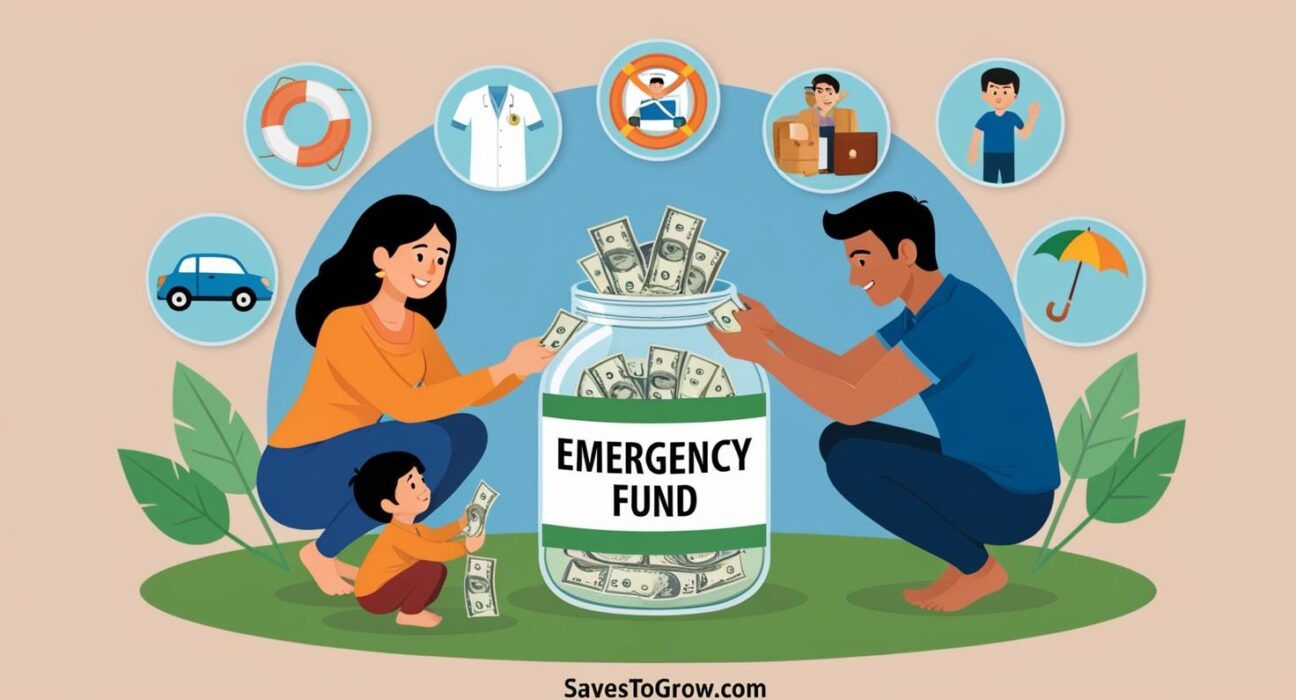An emergency fund is one of the most important financial tools you can have in place to protect yourself against life’s unexpected challenges. Whether it’s a job loss, a medical emergency, or an urgent car repair, an emergency fund ensures you’re financially prepared when the unexpected happens.
Building an emergency fund from scratch might seem daunting, but with the right strategy, you can grow it steadily and safely. Here’s how to get started:
1. Set a Realistic Goal
The first step in building an emergency fund is determining how much money you need to save. Ideally, your emergency fund should cover three to six months’ worth of living expenses. This amount gives you a cushion to weather tough times without accumulating debt.
Calculate your emergency fund goal:
- Fixed expenses (rent, utilities, insurance, etc.)
- Variable expenses (food, transportation, entertainment)
💡 Tip: If three to six months of living expenses feel too overwhelming, start with a smaller goal—like ₹50,000—and gradually work your way up.
2. Start Small and Be Consistent
Building an emergency fund doesn’t need to be a massive, one-time effort. Start with small, consistent contributions, and gradually increase the amount as you can.
Steps to start:
- Decide how much you can afford to save each month (even ₹500 a month adds up over time).
- Set up automatic transfers to your emergency fund savings account.
- Treat it like a bill—don’t skip it!
💡 Tip: Small steps lead to big results. Even saving a small amount consistently is better than saving nothing at all.
3. Choose the Right Account
Where you keep your emergency fund matters. You want your emergency fund to be easily accessible but separate from your regular spending account.
Consider these options:
- High-yield savings account: Offers better interest rates than regular savings accounts, and you can access your funds easily.
- Money market account: Similar to a savings account but may offer higher returns.
- Certificate of Deposit (CD): If you want your fund to grow more over time and don’t need immediate access, consider a short-term CD.
💡 Tip: Avoid putting your emergency fund in risky investments like stocks, as the goal is to have money available when you need it most.
4. Cut Back on Non-Essential Spending
One of the fastest ways to build your emergency fund is by cutting back on non-essential spending. Review your monthly expenses and identify areas where you can reduce or eliminate unnecessary purchases.
Examples of non-essential expenses to trim:
- Dining out or takeout
- Subscriptions (magazines, streaming services, etc.)
- Impulse purchases
💡 Tip: Small changes, like bringing your lunch to work instead of ordering it, can free up extra cash for savings.
5. Increase Your Income
If you want to build your emergency fund more quickly, consider finding ways to increase your income. Whether it’s working overtime, taking on a side hustle, or selling unused items, extra income can accelerate your savings goals.
Ideas to increase income:
- Freelancing: Use your skills in writing, graphic design, or web development.
- Online tutoring or consulting: If you have expertise in a subject, offer tutoring services online.
- Sell unused items: Sell old clothes, gadgets, or furniture for extra cash.
💡 Tip: Increasing income even a little bit can make a big difference in how quickly you reach your emergency fund target.
6. Keep Track of Your Progress
It’s easy to get discouraged if you don’t see immediate results, but tracking your progress is essential for staying motivated. Celebrate small milestones along the way, like hitting the ₹10,000 or ₹25,000 mark.
Tracking tools:
- Savings apps: Use apps like Qapital or Digit to set up savings goals and track progress.
- Spreadsheet: Create a simple savings tracker in Excel or Google Sheets.
💡 Tip: Keeping track of your progress will motivate you to continue saving.
7. Reassess Your Fund Periodically
As your life changes, so should your emergency fund. Review it every six months or so to ensure it’s still adequate for your needs.
Life changes to consider:
- A new job or promotion (higher income)
- A new family member or change in living situation (more expenses)
- Major life events (like moving to a new city or retiring)
💡 Tip: Reassess your goal each year and adjust accordingly, so you’re always covered.
✅ Final Word
Building an emergency fund is one of the best things you can do for your financial security. By setting a clear goal, making regular contributions, and choosing the right account, you can create a safety net that gives you peace of mind and prepares you for whatever life throws your way.
📌 Sources & References
- NerdWallet: How to build an emergency fund
- The Balance: Emergency fund tips
- Investopedia: Why emergency funds are essential
- User testimonials from Reddit India Finance






